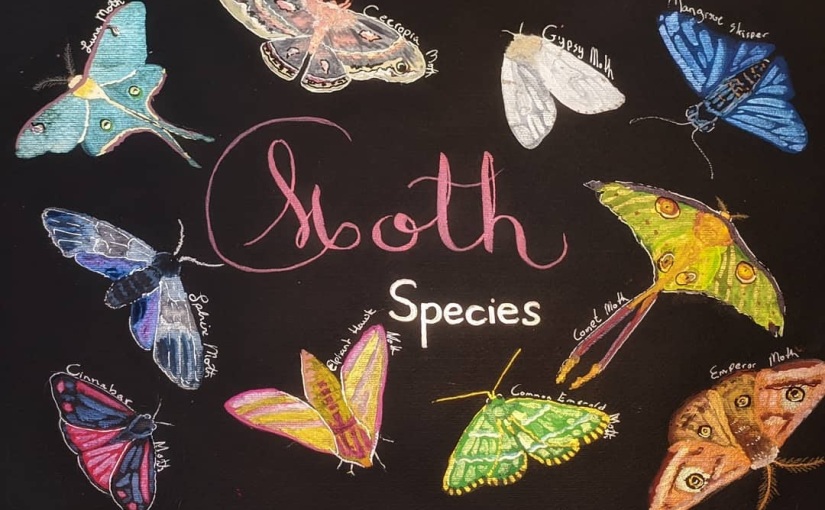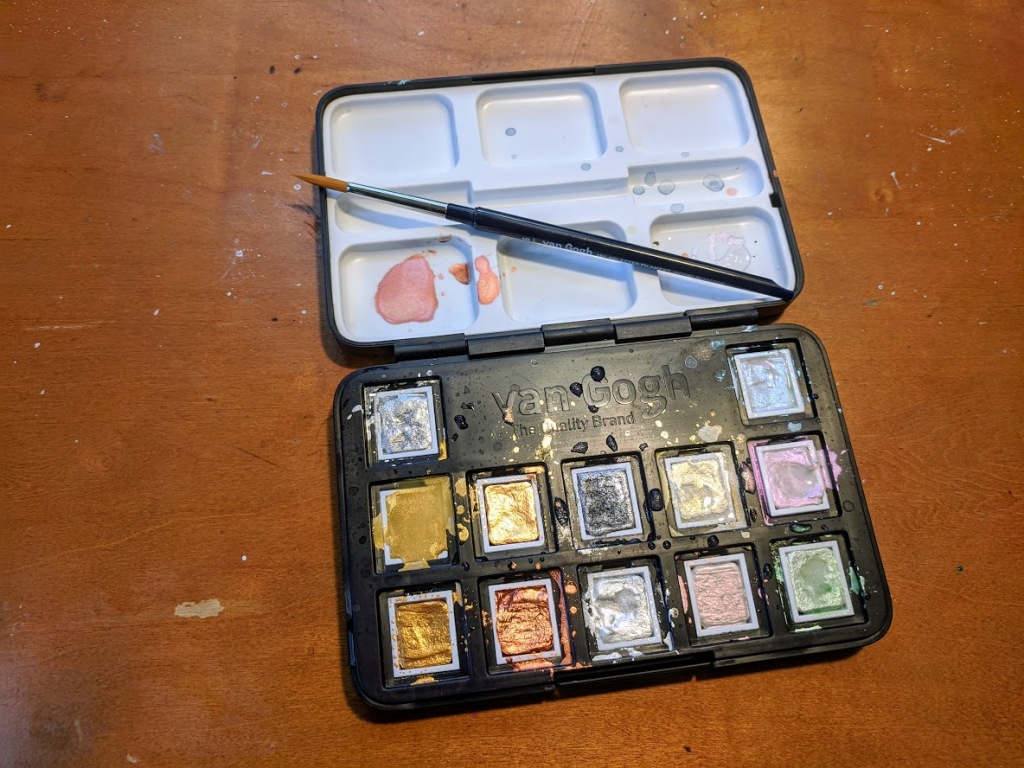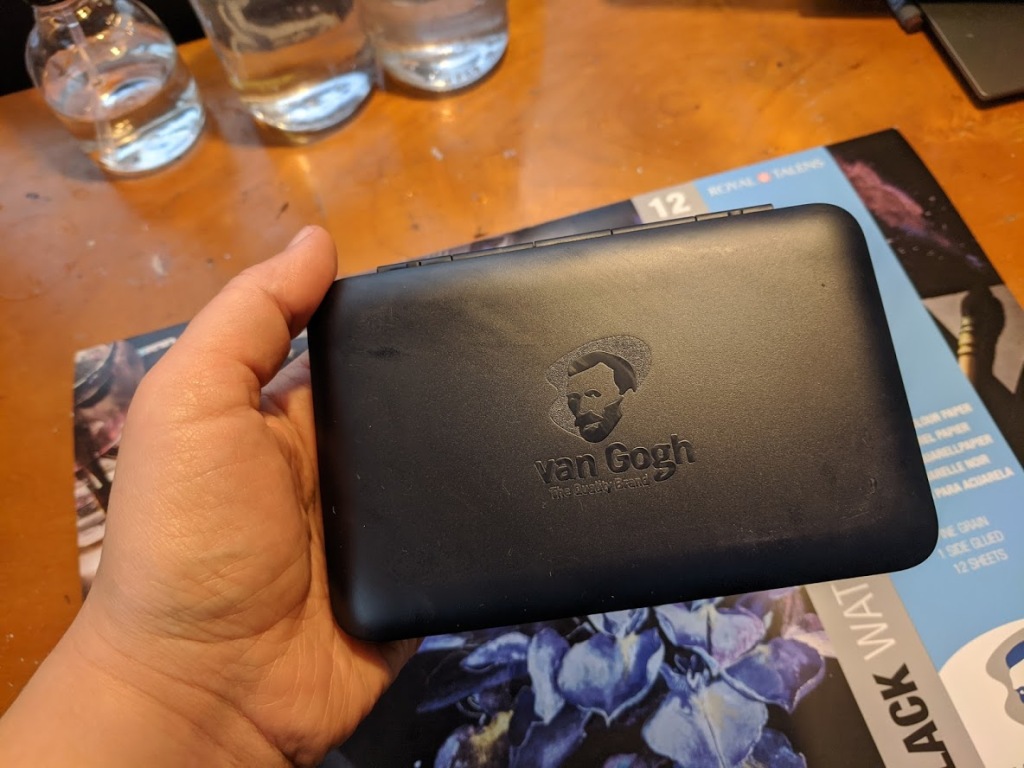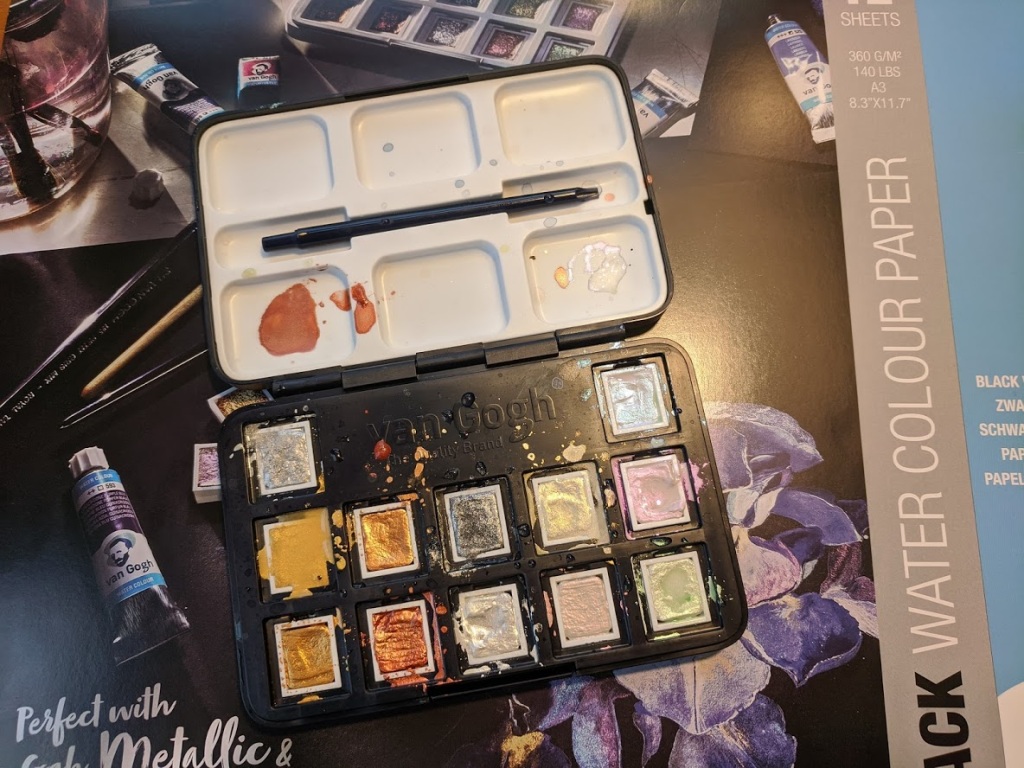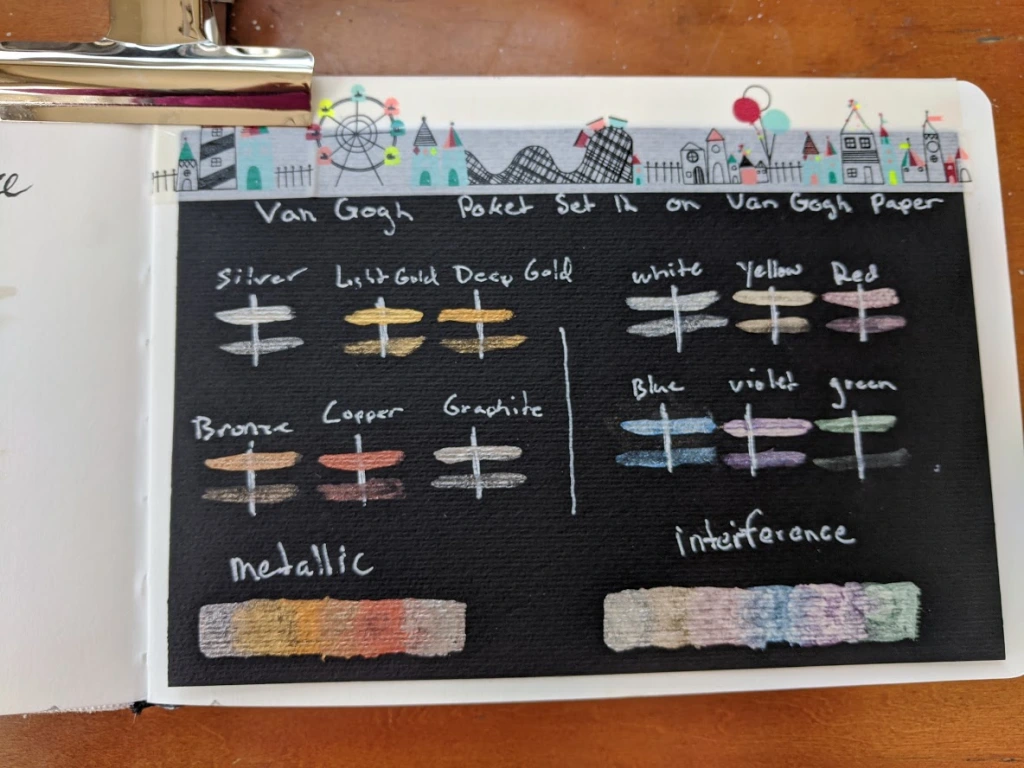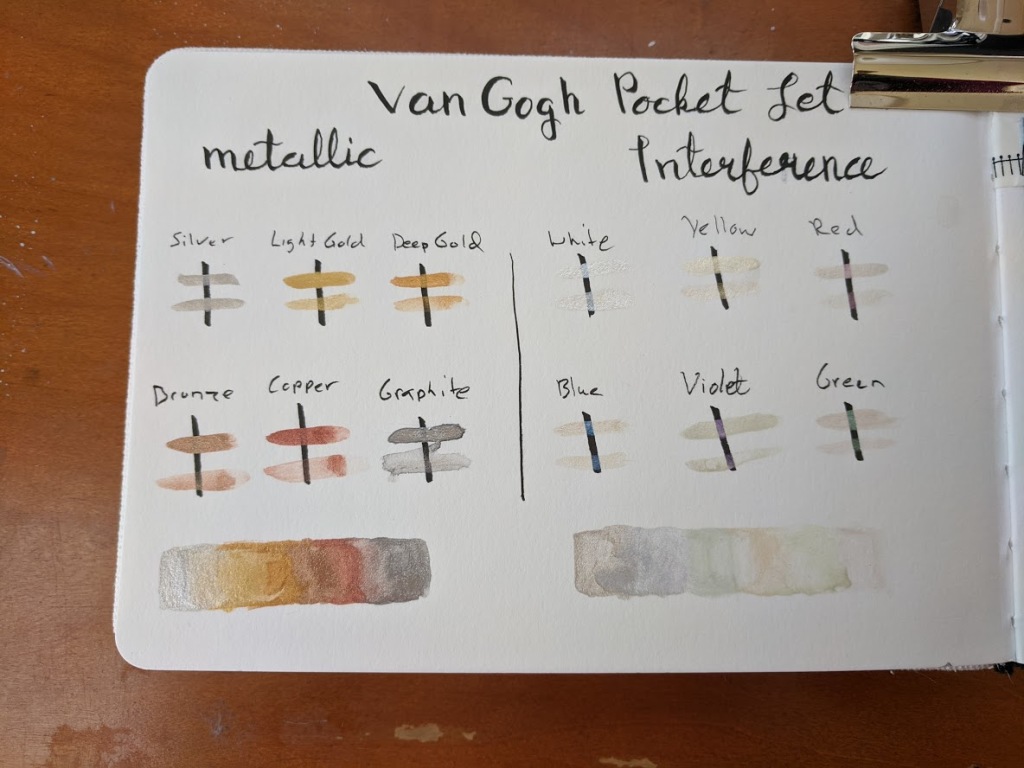Due to my ongoing obsession with black paper, I decided to give a new brand (to me) a try Van Gogh watercolors. I picked up the Specialty Set of Metallic and Interference Watercolor (I paid $55, but its $45 at Cheap Joe’s right now) and a 16.5” × 11.7” black paper pad ($25). Made by the Dutch company Royal Talens. Van Gogh is their “student and artist” line.
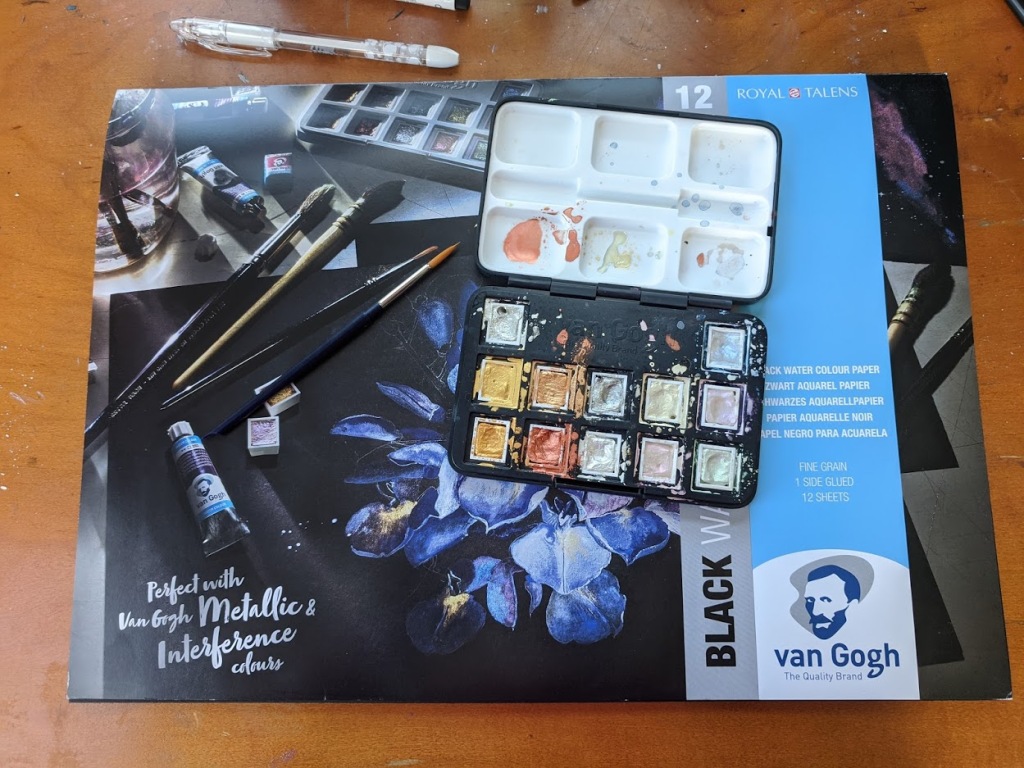
I am generally not a fan of student grade watercolors with a few exceptions. Many are so low pigment and so tricky to work with it can take the joy out of a painting. While others are fine for practice if you don’t need your piece to be lightfast. I have student grade paints I use for pieces I intended to scan and turn into digital art because, for that purpose, lightfastness is moot. Outside of that, I generally tend to stick with professional-grade paints. But, the Rembrandt Special Effects pallet is very expensive at the $100 price point and did not seem worth the investment for what amounts to experimentation on my part at this point. But, I am contemplating picking up the Rembrandt specialty colors in tubes, especially the glass-based paint in the future, which seems to be a better value than the set.
The Van Gogh set comes in a plastic box with a mixing palette and a travel brush. The pans are removable and come individually warped so you can order refills of your favorites. I know, given this is a student grade, I should expect plastic, but I find this kind of plastic case hard to travel with as I can’t use magnets to hold the pans in place nor the clips you see in some metal cases. I like that the case is black, but I wish this was also true for the included mixing palette, which is white. It is tough to see the colors of the interference paints on white.
For student grade paints, these are relatively pricey, but I think they are good quality student paints. I would put the metallics on the same level as the beloved Finetec brand for opacity. They would make excellent brush calligraphy paints. The interference behaves differently than I was expecting. I have used interference acrylics before, and the color shift between colors when viewed from different angles. The mic coated particles shift between an opalescent color and its complement. Such as red to green or yellow to purple. The watercolor Van Gogh interference paint shifts from white to colored. But are still very pretty, and I can see applications for feathers, scales, and other iridescent features. The interference paints really pop on black paper and give subtle sparkle on white. They do not scan well, however, and the camera really does not do them justice either.
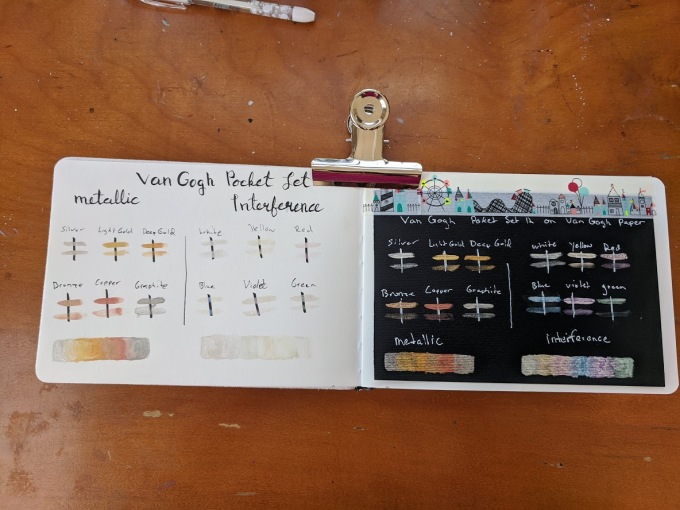
I decided to try to paint an illustration with just this set, which was rather tough, and I did end up falling back on my white and black pens for details after.
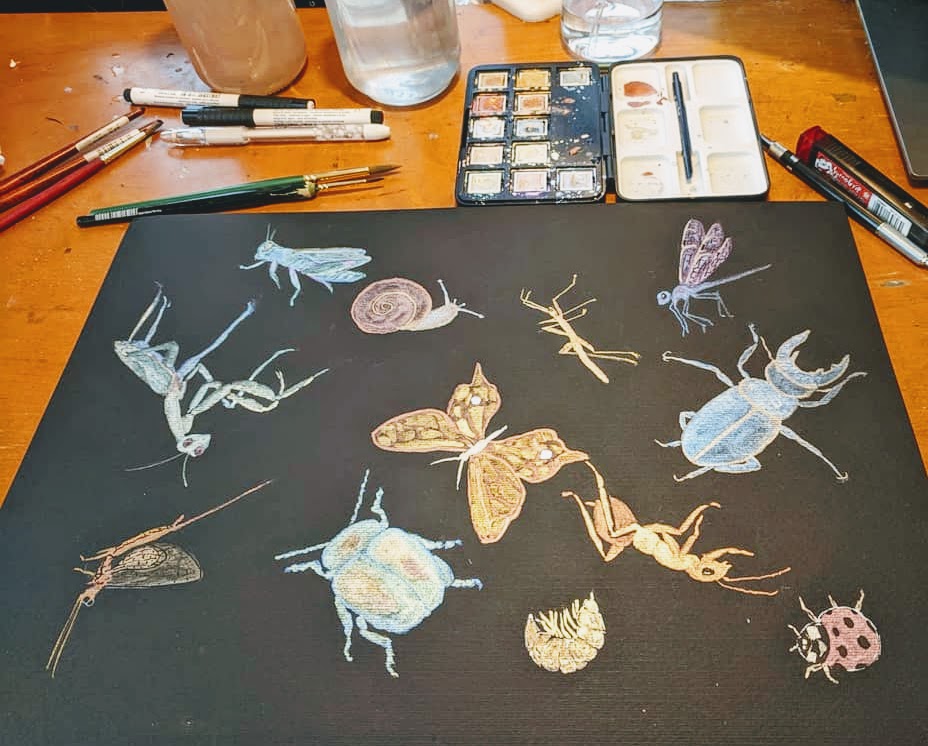
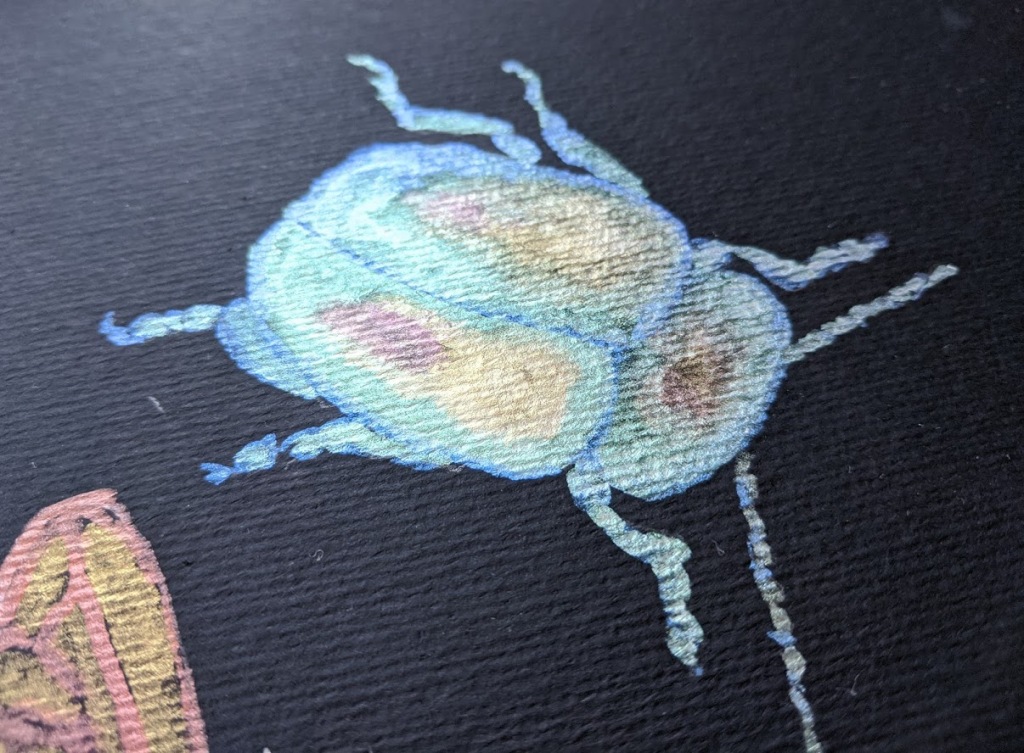
They worked much better for me as part of a mixed media piece with gouache, ink, and Finetec watercolors.
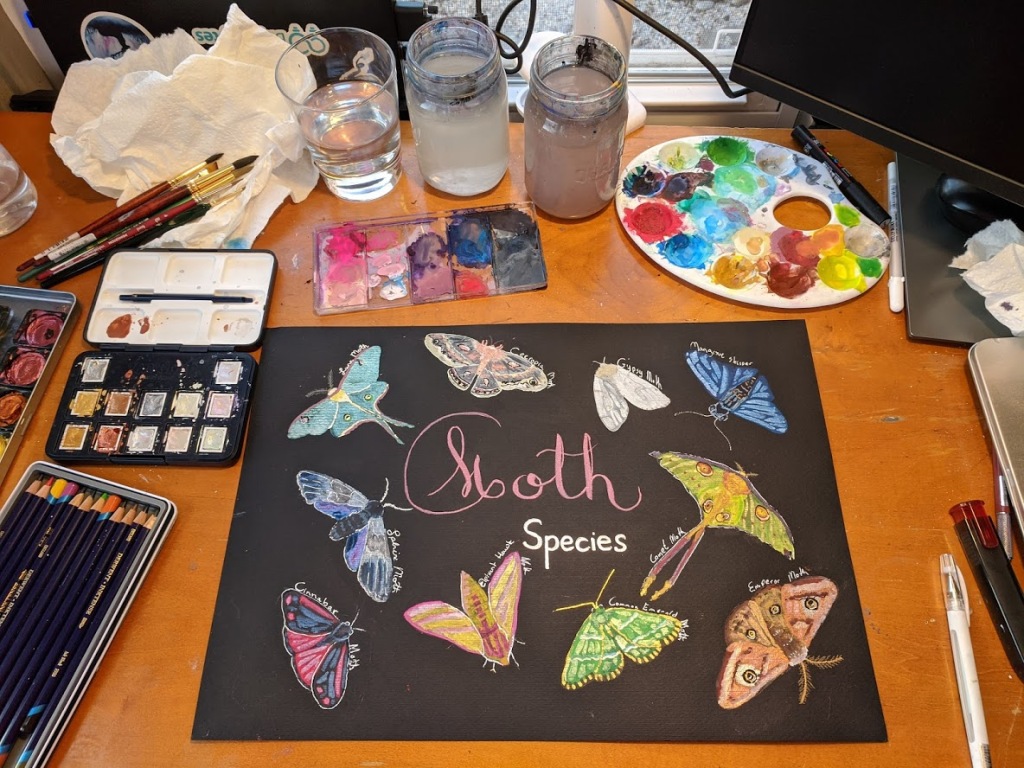
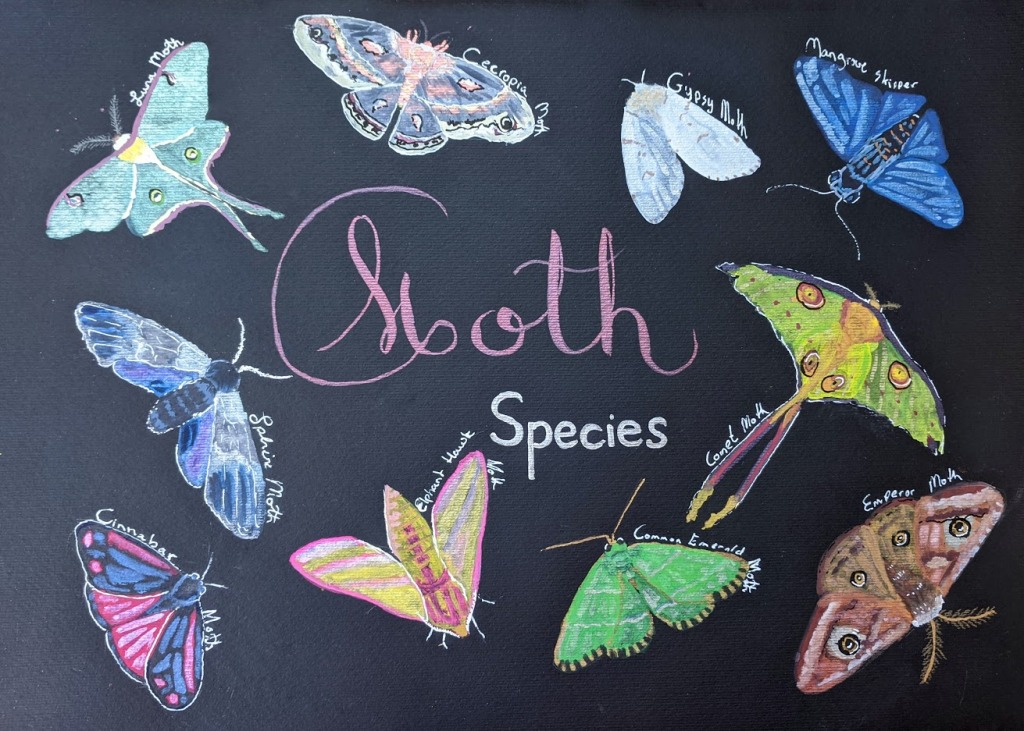
As for the paper, it is 140 lbs and is a reasonably decent watercolor paper. It will only buckle if you get it sopping wet but will then dry flat. It works excellent for brush calligraphy and illustration. The only drawback is both sides are rough, so for dip pen calligraphy, the Stonehenge pad is a better option. Overall I would say using these supplies was a pleasant experience, and I will defiantly experiment with them more in the future.
Happy Art Journey,
Justine
